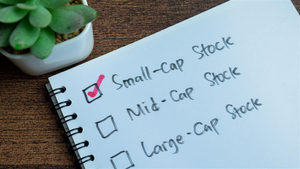When it comes to making your home feel warm and inviting, few things work as well as engineered hardwood. It brings the beauty of real wood without all the fuss. Whether you're building new or giving your space a refresh, engineered hardwood adds style that lasts for years.
Not only is it easy on the eyes, but it’s also tough enough to handle busy family life. You can use it in so many creative ways! From floors to walls and even furniture touches, engineered hardwood is your secret tool to turning any room into something special.
Understanding Engineered Hardwood: What Makes It Special?

When it comes to improving your home’s look, engineered hardwood flooring Toronto stands out as a smart and stylish choice. But what exactly makes engineered hardwood different from regular hardwood? Let’s break it down so you can see why it’s becoming such a popular option in home design across Toronto.
What Is Engineered Hardwood?
Engineered hardwood is a type of flooring made by layering thin pieces of wood together. The top layer is real hardwood, which gives it the natural beauty and grain you want to see. Below that are layers of plywood or high-quality wood that make the plank stronger and more stable. This design helps engineered hardwood handle changes in temperature and moisture better than solid wood floors.
Why Is Engineered Hardwood Special?
One big reason engineered hardwood is special is its durability. Because of its layered structure, it doesn’t expand or shrink as much as regular hardwood when the weather changes. This means it’s less likely to warp or crack over time. You can even use engineered hardwood in places where solid wood wouldn’t work well, like basements or kitchens.
Another great thing is how easy it is to install. Engineered hardwood often comes in planks that click together, making it a great choice for DIY projects or faster professional installation. Plus, it comes in many styles, colors, and finishes, so you can find the perfect look to match your home’s design.
The Look and Feel of Engineered Hardwood
Because the top layer is real wood, engineered hardwood looks and feels just like solid hardwood floors. You get all the warmth and charm of natural wood, but with added strength and flexibility. Whether your style is modern, rustic, or classic, engineered hardwood can fit right in.
In short, engineered hardwood offers the beauty of real wood with extra benefits that make it a practical choice for any room in your home.
Choosing the Right Engineered Hardwood for Your Space

Picking the perfect engineered hardwood for your home can feel overwhelming with so many options available. But don’t worry; choosing the right type doesn’t have to be complicated. Understanding a few key factors will help you find the best fit for your space and style.
Finding the Best Color and Finish
The color and finish of your engineered hardwood set the tone for your room. Light colors can make a space feel open and airy, while darker tones add warmth and coziness. If you want a modern look, smooth finishes with little texture work great. For a rustic or natural vibe, go for a matte finish with visible wood grain and knots. Think about the mood you want to create and pick a color that complements your furniture and walls.
Match Hardwood Style to Your Room’s Design
Engineered hardwood comes in different styles, including wide planks, narrow strips, and even distressed looks. Wide planks tend to make rooms feel bigger and less busy, perfect for open living areas. Narrow strips work well in smaller rooms or traditional designs.
If your home has a vintage or farmhouse feel, a distressed or hand-scraped finish can add character. Choosing the right style helps your flooring blend seamlessly with the rest of your decor.
Consider Plank Width and Texture
The width of the hardwood planks also changes how a room looks. Wider planks can make a bold statement and feel more modern, while thinner planks create a classic, detailed appearance. Texture matters too; smooth planks are sleek and easy to clean, while textured ones hide scratches and dirt better. Think about where you’ll use the flooring and what kind of wear it will need to handle.
Creative Ways to Use Engineered Hardwood in Interior Design
Engineered hardwood isn’t just for floors anymore. Its beauty and versatility make it a fantastic choice for adding style and warmth throughout your home. Let’s explore some creative ways to use engineered hardwood that go beyond traditional flooring.
More Than Just Flooring
Of course, the most common use for engineered hardwood is as floor covering. It brings natural wood’s warmth and charm to any room, making spaces feel cozy and inviting. But don’t stop there; engineered hardwood can be used in surprising ways to create unique design features.
Accent Walls That Stand Out
One popular trend is using engineered hardwood to build an accent wall. Adding wood planks to a single wall in your living room, bedroom, or even dining area instantly creates a focal point. It adds texture and depth without overwhelming the space. This approach is perfect if you want to introduce wood’s natural beauty without covering the whole room.
Mix and Match Materials
Engineered hardwood also pairs well with other materials like stone, tile, or metal. For example, combining hardwood flooring with a stone fireplace or metal fixtures creates a balanced look that feels modern and grounded. You can even mix hardwood with tile in kitchens or bathrooms for a stylish contrast that’s both practical and eye-catching.
Use Hardwood for Furniture and Shelving
Beyond walls and floors, engineered hardwood can be used to create custom furniture, shelves, or even staircases. These pieces bring a touch of wood’s warmth into your space in a subtle, functional way. Plus, they often match the flooring, creating a seamless flow throughout the room.
Maintenance Tips to Keep Your Engineered Hardwood Looking Fresh
Keeping your engineered hardwood floors looking great is easier than you might think. With a little regular care, you can enjoy their beauty for years without much hassle. Let’s go over some simple tips to help you maintain your engineered hardwood.
Easy Cleaning Habits
One of the best things about engineered hardwood is that it’s easy to clean. Sweeping or vacuuming regularly helps remove dust and dirt that can scratch the surface. When you need a deeper clean, use a damp mop with a cleaner made specifically for hardwood floors. Avoid soaking the floor with water because too much moisture can damage the wood layers.
Protect Against Scratches and Damage
To keep your floors scratch-free, place felt pads under furniture legs so they don’t dig into the wood when moved. Avoid walking on your floors with high heels or shoes with sharp edges. Also, try to keep pet nails trimmed. Using area rugs in high-traffic zones can protect your floors from wear and tear while adding style to your space.
When to Refinish or Repair
Even though engineered hardwood is tough, it can still get worn over time. If your floors start to look dull or scratched, you may want to refinish them. The good news is that engineered hardwood can be sanded and refinished a few times, depending on the thickness of the top wood layer. For small scratches, special repair kits can help restore the finish without much effort.
Conclusion
Adding engineered hardwood to your home is an easy way to boost style and comfort. It fits any room, any style. Whether on floors, walls, or accents, it adds timeless charm. Play with colors and textures to make it yours. Design your dream space with ease and warmth.
Media Contact
Company Name: Lvflooring
Contact Person: Christopher
Email: Send Email
City: Toronto
Country: Canada
Website: https://lvflooring.ca/






